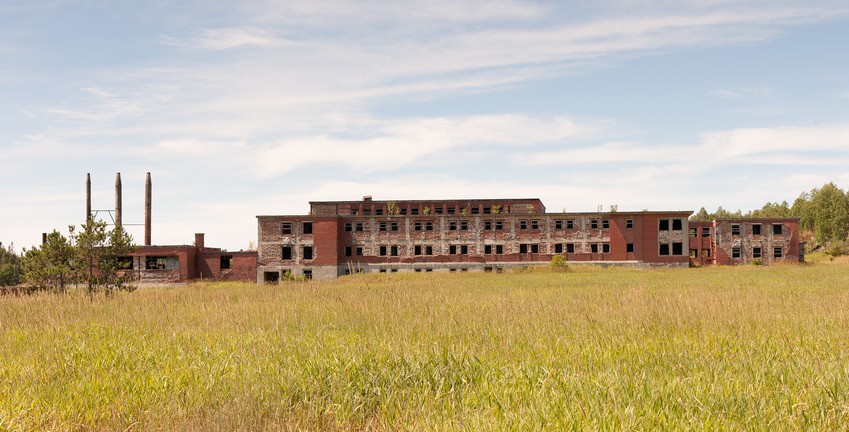Burwash Industrial Farm Mission (Burwash, Ont.) sous fonds
Accrual 2016-002 was transferred by Peter Varpio, Rector's Warden of the Anglican Church of the Epiphany (Sudbury, Ont.) to Algoma University on December 9, 2015.
May be restrictions on access based on the terms of the Deposit Agreement, the Diocese's Policy on Privacy and Archives. Subject to all applicable privacy legislation.
May be restrictions on use based on the terms of the Deposit Agreement, the Diocese's Policy on Privacy and Archives. Subject to all applicable privacy legislation.
Minor conservation performed on sous fonds.
0.05 m of textual records.
 Burwash Industrial Farm (also known as the Burwash Correctional Centre) was established in 1914 based on the notion that low-risk inmates would benefit from the exercise and skills learned while working outdoors at self-supporting institutions. Burwash housed between 180 and 820 low and medium offenders with sentences of three months to two years less a day. It was located about 20 miles south of Sudbury.
Burwash Industrial Farm (also known as the Burwash Correctional Centre) was established in 1914 based on the notion that low-risk inmates would benefit from the exercise and skills learned while working outdoors at self-supporting institutions. Burwash housed between 180 and 820 low and medium offenders with sentences of three months to two years less a day. It was located about 20 miles south of Sudbury.
It grew to own 35,000 acres of land and 101,000 leased acres. It also housed three permanent camp sites and several temporary camps. The two main camps were Camp Spruce and Camp Bison. This operation resulted in the establishment of the town of Burwash, Ontario. The town was made up of prison staff and their families, with a population of 600 to 1000 people. At it's peak the Farm was a major employer in the Sudbury region.
 Church of England services began to be carried out in April of 1921, but no inmate was forced to go to service. Any participation in religious matters is purely voluntary. The church here for many years was run by part-time chaplains or incumbents of neighbouring parishes. It was not until the 1959 Archdeaconry of Nipissing Report that it was noted that for the first time the authorities decided to appoint a full time Chaplain to the Burwash Industrial Farm - it was the Rev. G. F. Leigh who came in January of 1958. At this time regular Church services were held every Sunday at each of the three camps, except one Sunday each month that was reserved for a central service for the celebration of the Holy Communion.
Church of England services began to be carried out in April of 1921, but no inmate was forced to go to service. Any participation in religious matters is purely voluntary. The church here for many years was run by part-time chaplains or incumbents of neighbouring parishes. It was not until the 1959 Archdeaconry of Nipissing Report that it was noted that for the first time the authorities decided to appoint a full time Chaplain to the Burwash Industrial Farm - it was the Rev. G. F. Leigh who came in January of 1958. At this time regular Church services were held every Sunday at each of the three camps, except one Sunday each month that was reserved for a central service for the celebration of the Holy Communion.
Prison inmates provided labour to the entire community; they ran a mixed farm, a tailor shop, and a logging operation to name a few. The Burwash Industrial Farm was one of the largest correctional facilities in 20th century in Ontario. It ceased operations in 1975, the decision being made for financial reasons.
Sources:
- "Burwash," The Algoma Missionary News 18, no. 6 (1922): 88. Algoma University Archives, 2009-081_001_012_1922August.
- "Burwash Industrial Farm Is Key to Rehabilitation Regeneration - Basic Aim," The Algoma Anglican (1957): 11. Algoma University Archives, 2013-086-001-001_1957October.
- "Archdeaconry of Nipissing Report," and "Report of Work at Burwash Industrial Farm," 1959, Journal of Proceedings of the Nineteenth Session of the Synod, Algoma University Archives, 2009-078_002_017.
Sous fonds comprises records documenting activities at the Burwash Industrial Farm (Burwash, Ont.). Includes a baptism register.
Baptism register
2.8 cm of textual record